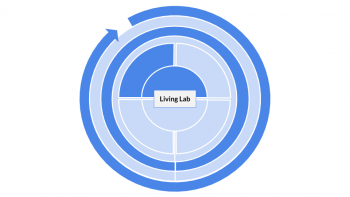Living Labs & Real World Laboratories
| Method categorization | ||
|---|---|---|
| Quantitative | Qualitative | |
| Inductive | Deductive | |
| Individual | System | Global |
| Past | Present | Future |
Annotation: This entry deals with two concepts: Living Labs as well as Real-World Laboratories. While these are not strictly scientific methods as much as they are settings and modes, they shall be presented here in order to highlight their unique approach to scientific inquiries. Further, while both concepts are closely related, they are distinct in various aspects. Because of this, their description will be done separately where necessary and jointly where appropriate.
Background
Both the Living Lab and the Real-World Laboratory approach are rather new research areas, emerging from the beginning of the 21st century.
The Living Lab (LL) started outside of academia, revolving around testing new technologies in home-like constructed environments in order to promote entrepreneurial innovation (1). In 2006, the European Network of Living Labs (EnoLL) was founded by the Finnish government, focusing on information and communication technologies and institutionalizing the concept (6, 9). The concept is therefore common predominantly in Europe but has also expanded to other geographical contexts during the last years (see Further Information). Living Labs have also emerged as a transdisciplinary scientific method, its applications going beyond product and service development for the sake of business:
